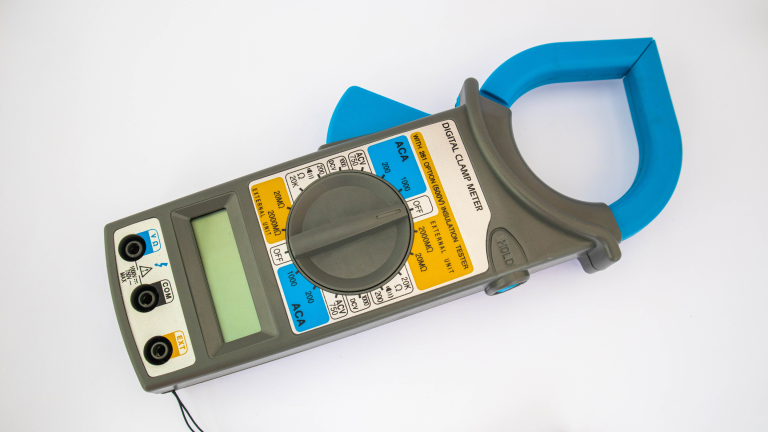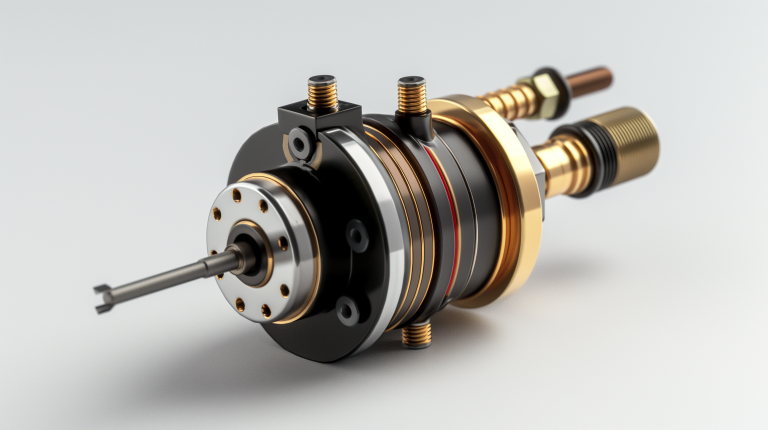
Power meters have revolutionized the way cyclists train and race, empowering them with a level of control that was previously unimaginable. The benefits of using power meter cycling extend far beyond mere data collection. These devices provide precise, real-time feedback that fundamentally transforms your riding experience. Whether you’re gearing up for your first century ride or preparing for competitive racing, understanding these benefits puts you in the driver’s seat regarding your cycling equipment.
Many cyclists wonder whether it’s worth investing in power meters. The truth is, these devices offer unique advantages that other training tools simply can’t match. They measure your actual work output in watts, providing you with objective data about your performance. This information not only helps you train smarter and race better but also instills confidence in the accuracy of your fitness progress tracking.
A cyclist trains indoors on a smart trainer, monitoring speed and heart rate data.
What Makes Power Meters Special
Power meters use strain gauge technology to measure the force you apply to your bike. This technology is exact, with most power meters offering accuracy within 1-2% of your actual power output. The measurement happens instantly, unlike heart rate monitors that take 60-120 seconds to respond to changes in effort.
The core principle behind power meter measurement is straightforward. Strain gauges detect tiny deformations in the material when you pedal. These deformations are converted into electrical signals that calculate your power in watts. This direct measurement approach makes power meters far more reliable than estimated calculations, giving you a sense of security in your training decisions.
This is an illustration showing strain gauges, a Wheatstone bridge, and an amplifier, key components in power meters for accurate power measurement.
Power meters work in all weather conditions and aren’t affected by external factors. Your power output reading stays consistent whether you’re riding in hot weather, feeling tired, or drinking caffeine. This consistency makes power meters invaluable for structured training programs.
Key Performance Benefits of Using Power Meter Cycling
The benefits of using power meter cycling start with objective performance measurement. You get instant feedback about how hard you work, measured in watts. This data helps you pace your efforts correctly during training and racing.
Power meters eliminate the guesswork from cycling training. You know exactly how much power you’re producing at any moment. This precision allows you to target specific training intensities with remarkable accuracy. You can follow precise power targets instead of relying on how you feel.
The accuracy of power meters makes them essential for serious training. Most quality power meters maintain accuracy within 1-2% across their entire measurement range. This level of precision means you can trust your data when making training decisions.
Comparative data visualization of power and cadence metrics from two cycling power meters over a training session.
Power meters also provide the most accurate calorie calculations available. The relationship between power output and energy expenditure is direct and measurable. Power-based calorie calculations are accurate within 5%, compared to 10-20% accuracy from heart rate monitors. This precision helps with nutrition planning and weight management goals.
Training Advantages That Matter
The benefits of using power meter cycling extend to every aspect of your training routine. Based on your Functional Threshold Power (FTP), power zones create structured training programs. These zones target specific physiological adaptations that improve your cycling performance.
With accurate power measurement, sweet spot training, performed at 88-94% of FTP, becomes possible. This training zone provides excellent fitness gains without excessive fatigue. Sweet spot workouts improve both aerobic and anaerobic capacity efficiently. The precision of power meters makes these targeted efforts achievable.
FTP testing with a power meter gives you an objective measure of your cycling fitness. The standard 20-minute test protocol provides a baseline for setting training zones. Regular FTP testing every 6-8 weeks tracks your fitness improvements. This objective measurement removes guesswork from training progression.
Power meters excel during interval training, while heart rate monitors struggle. Short intervals require immediate intensity feedback that only power meters can provide. Your power reading responds instantly when you start an interval, while your heart rate takes too long to catch up, making it unsuitable for precise interval work.
Power Meter vs Heart Rate Monitor Comparison
Understanding the benefits of using power meter cycling requires comparing them to heart rate monitors. Both tools have their place, but power meters offer distinct advantages for serious training.
The response time difference is significant. Power meters give instant feedback when you change your effort level, while heart rate monitors lag behind by 60-120 seconds. This delay makes heart rate unsuitable for precise pacing during short efforts or variable terrain.
External factors heavily influence heart rate, but don’t affect power meters. Heat, dehydration, caffeine, stress, and fatigue all impact heart rate, but power meters remain unaffected by these variables. One watt is always one watt, regardless of external conditions.
Cardiac drift presents another challenge for heart rate training. As you become fatigued during long rides, your heart rate increases while your power output may decrease. Power meters detect this performance decline immediately. Heart rate monitors cannot distinguish between an increased heart rate from effort versus fatigue.
Types of Power Meters Available
The benefits of using power meter cycling vary slightly depending on the type chosen. Pedal-based power meters offer the highest portability, crank arm power meters provide a good balance of affordability and accuracy, spider and chainring power meters integrate into your bike’s drivetrain, and hub-based power meters built into rear wheels offer good protection. Each type has specific advantages and considerations for different cyclists.
Pedal-based power meters offer the highest portability. They can easily be moved between different bikes. Installation requires only basic pedal-swapping skills. Pedal power meters work with any bike that accepts standard pedal threads.
A Favero Electronics pedal-based power meter for cycling.
Crank arm power meters provide a good balance of affordability and accuracy. Single-sided crank arm meters offer the lowest entry price point. They estimate total power by doubling the measurement from one leg, while dual-sided systems measure power from both legs separately.
Spider and chainring power meters integrate into your bike’s drivetrain. They typically offer dual-sided measurement as standard. Installation requires more technical knowledge but provides excellent protection from damage. These systems work well for cyclists with multiple wheelsets.
Hub-based power meters built into rear wheels offer good protection. They measure power at the wheel rather than the drivetrain. This placement means they account for drivetrain losses. Hub power meters require wheel compatibility considerations.
A close-up view of a Favero Assioma Shi pedal-based power meter connected to a Shimano Ultegra bicycle pedal and crank arm.
Getting Started with Power Meter Training
The benefits of using power meter cycling become apparent once you start training with power zones. Begin by establishing your Functional Threshold Power (FTP) through testing. This typically involves a 20-minute test where you ride as hard as you can sustain for the entire duration. The average power you produce during the last 20 minutes of the test is your FTP, which determines all your training zones.
The standard FTP test involves a 20-minute all-out effort. Multiply your average power by 0.95 to estimate your FTP. This number becomes the foundation for calculating your power zones. Zone 2 endurance rides happen at 55-74% of FTP, and sweet spot training occurs at 88-94% of FTP.
Power meter selection depends on your budget and bike setup. Entry-level single-sided crank meters start around $200, while high-end dual-sided pedal systems can cost over $1000. When choosing, consider your bike compatibility and portability needs.
A cycling computer and course profile chart are mounted on a bicycle handlebar for a training ride.
Connectivity matters for data analysis and training. Most modern power meters support both ANT+ and Bluetooth protocols. This compatibility ensures they work with cycling computers, smartphones, and training apps. Regular software updates maintain accuracy and add features.
Race Day Applications
The benefits of using power meter cycling shine brightest during competitive events. Power-based pacing prevents the common mistake of starting too hard. You can target specific power outputs that you know you can sustain.
Time trials benefit enormously from power meter pacing. You can ride at your maximum sustainable power for the entire duration. This approach typically produces faster times than pacing by perceived effort alone. Power meters eliminate the guesswork from race day execution.
Climbing performance improves when you can monitor power-to-weight ratios. Power meters help you find the most efficient climbing technique. You can compare power outputs between seated and standing positions. This data helps optimize your climbing strategy for different gradients.
Group rides and races present opportunities for tactical power management. You can monitor your energy expenditure during attacks or chase efforts. Power data helps you decide when to respond to moves and when to conserve energy. This tactical awareness can make the difference in competitive situations.
Long-term Benefits and Progress Tracking
The benefits of using a power meter cycling compound over months and years of training. Power data creates an objective record of your fitness development. You can track improvements in FTP, peak power, and endurance capacity.
With power meters, seasonal training periodization becomes more precise. You can plan training phases around specific power development goals. Base training focuses on aerobic power development in zones 1-3. Build phases target threshold and VO2 max power in zones 4-6.
Equipment optimization benefits from power meter data. You can test aerodynamic improvements by comparing power outputs at different speeds. Differences in rolling resistance between tires become measurable. Position changes can be evaluated for their impact on power production.
Weight loss efforts become more accurate with power meter calorie data. The precise energy expenditure calculations help with nutrition planning. You can balance caloric intake with measured energy output. This precision supports sustainable weight management strategies.
Power meters provide the most objective measure of cycling performance available today. The benefits of using power meter cycling extend from daily training to race day execution. While the initial investment may seem significant, the training advantages and performance improvements justify the cost for dedicated cyclists. These devices transform cycling from subjective effort-based training to precise, data-driven performance optimization.

